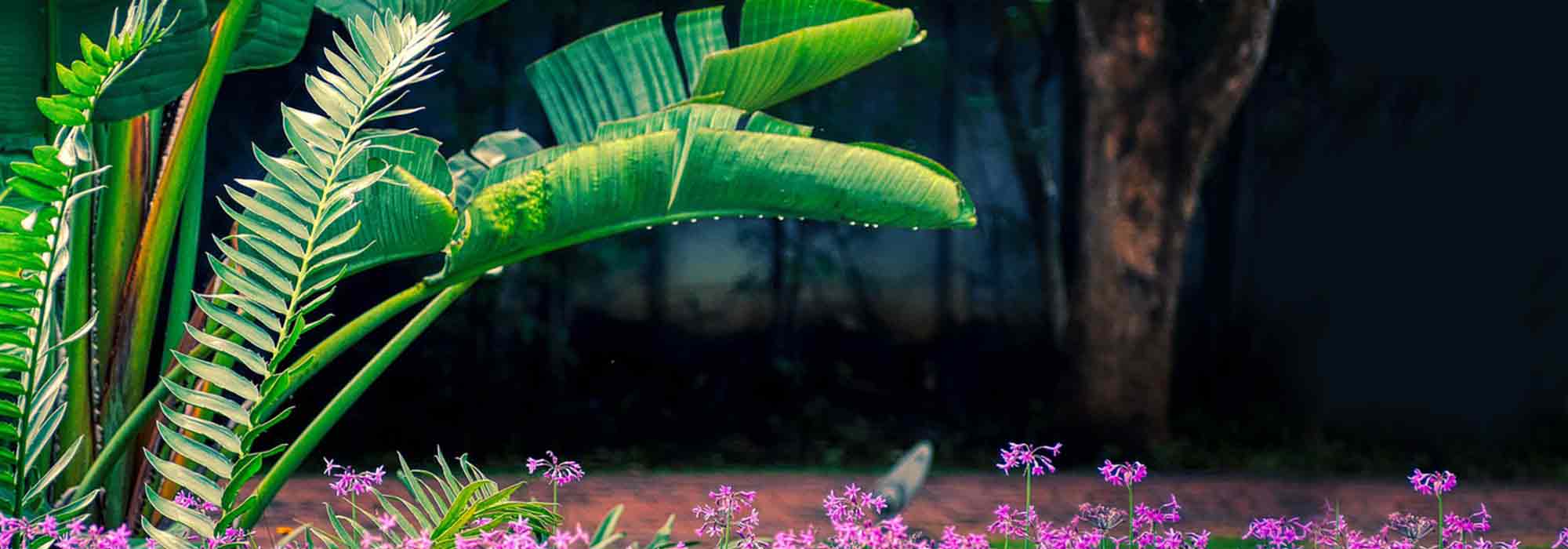
Associate the banana plant
Association ideas, inspirations
Contents
The banana plants are tropical plants typically grown in pots in our latitudes, allowing them to be stored warm during winter. However, some varieties are robust and hardy enough to be planted in the ground. The banana plant proves to be a valuable ally in creating a stunning garden with exotic notes. It is then paired with many other plants, forming a vibrant, lush, and colourful green space.
Not sure how to incorporate the banana plant into your garden? Here are some ideas for combinations to spark your inspiration.
Creating an exotic garden with the banana plant
The banana plant is a giant herbaceous plant perfect for creating an exotic garden. Various plants can be associated with it to enhance its tropical appearance.
We think particularly of plants that offer very large leaves, such as the exuberant Tetrapanax, the Gunnera with its monumentally tufted leaves, the sturdy Hosta, a lover of cool shade, the tree ferns with their little Jurassic air, as well as the palms, universal symbols of holidays and exoticism, or even the castor beans with their very original palmate leaves. These plants with lush foliage will quickly allow you to create a small jungle in your garden.
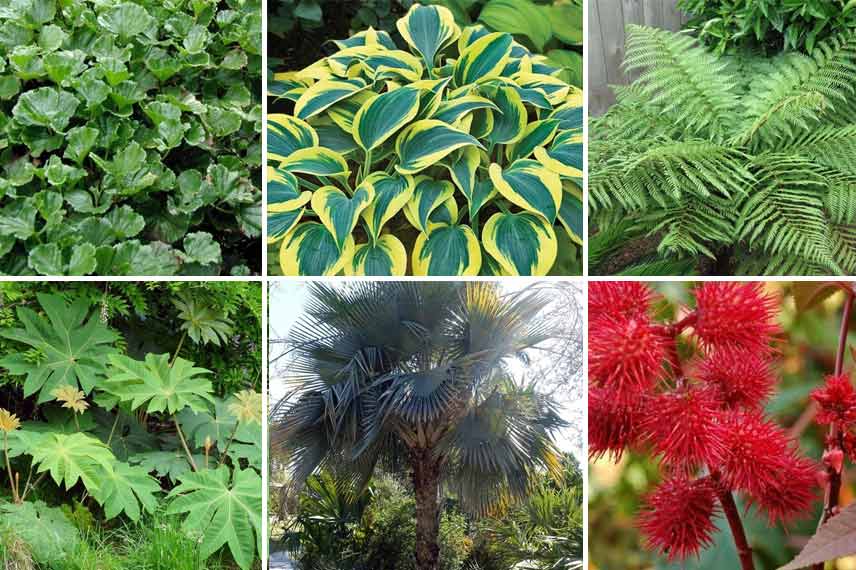 Gunnera magellanica, Tetrapanax papyrifera Rex, Hosta Autumn Frost, Copernicia hospita, Dicksonia squarrosa and Common castor bean
Gunnera magellanica, Tetrapanax papyrifera Rex, Hosta Autumn Frost, Copernicia hospita, Dicksonia squarrosa and Common castor bean
To bring some structure to your jungle garden, pair your banana plants with very graphic plants, such as the highly ornamental Yucca, the elegant Albizzia, and even bamboo which will add verticality to the whole.
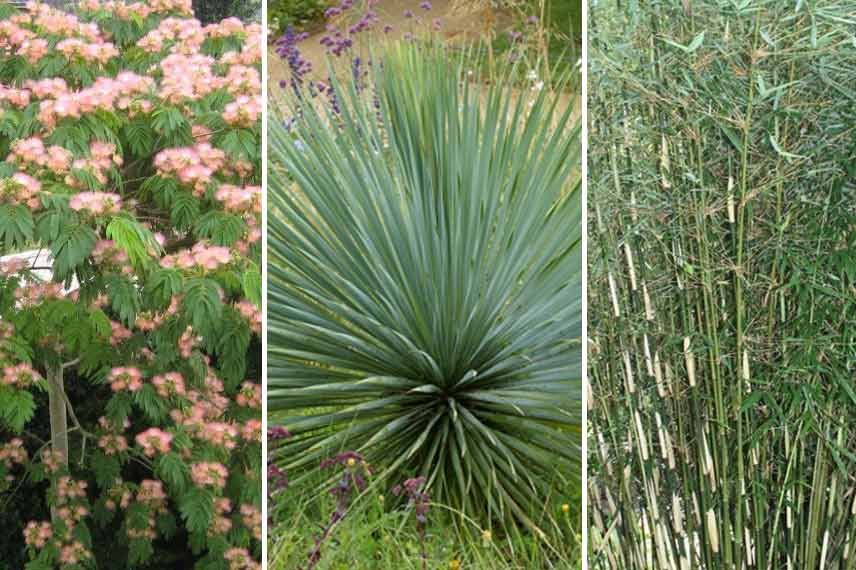 Albizzia Tropical Dream, Yucca rostrata, Fargesia robusta
Albizzia Tropical Dream, Yucca rostrata, Fargesia robusta
An exotic garden also needs colour, which can be provided by grasses with coloured leaves. We think particularly here of Hakonechloa with its leaves that are sometimes green, golden, striped with gold or white, of Carex comans with its brown, orange, green, grey, glaucous, yellow or white foliage, as well as of Imperata cylindrica ‘Red Baron’ whose olive green foliage turns blood red.
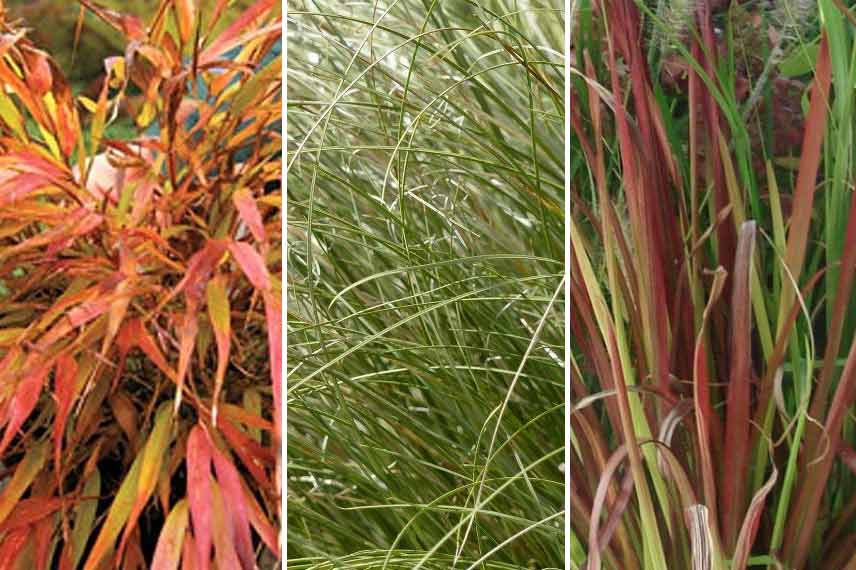 Hakonechloa macra Nicolas, Carex comans Frosted Curls, Imperata cylindrica ‘Red Baron’
Hakonechloa macra Nicolas, Carex comans Frosted Curls, Imperata cylindrica ‘Red Baron’
But colour is of course also brought by flowers. Opt for varieties with warm flowering tones tinged with red, yellow, and orange. They will make a great impact alongside the banana plant. So turn to Cannas, or Canna lilies, which are indeed close to the banana plant, to Dahlias with their splendid long-lasting blooms, to the very floriferous Crocosmias, or even to Hedychiums, wild ginger with magnificent spikes of exotic flowers.
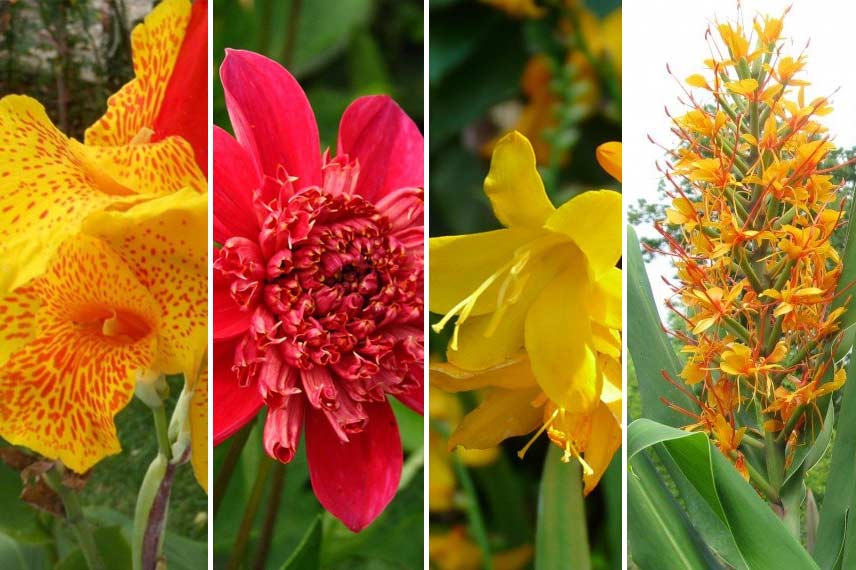 Canna Cleopatra, Dahlia anemone Inca, Crocosmia crocosmiiflora Buttercup, Hedychium coccineum Tara
Canna Cleopatra, Dahlia anemone Inca, Crocosmia crocosmiiflora Buttercup, Hedychium coccineum Tara
Finally, plant a few varieties of lianas in your jungle garden. These will undoubtedly enhance its wild and lush appearance. Among them, we think particularly of hops, a voluble climber reaching 10 m in height, of akebia, a remarkable climbing plant with clusters of astonishing flowers, of passionflower, a powerful voluble climber with intricately shaped flowers, or even of trumpet vine, a generous climbing liana with very colourful trumpet-shaped flowers.
 Humulus lupulus Aureus, Akebia pentaphylla, Passiflore caerulea, Campsis grandiflora
Humulus lupulus Aureus, Akebia pentaphylla, Passiflore caerulea, Campsis grandiflora
Read also
Potted Banana tree: planting and careSome ideas for pairing banana plants of the genus Musa
Among banana plants, the genus Musa is undoubtedly the most well-known. Indeed, among them are the banana plants that produce edible bananas. In our latitudes, however, we prefer to focus on hardy varieties for garden planting.
Thus, the Musa Basjoo, a banana plant native to China, can withstand temperatures of around -12 to -15°C for short periods. This robust banana plant, with a very exotic appearance and its immense bright green leaves, can, for example, be paired with a bed of purple asters, a border of lavender and giant stipes.

Aster alpinus Goliath, Musa Basjoo, Lavande Phenomenal, Stipa gigantea
Musa Sikkimensis offers a tropical appearance and a reasonable size, allowing it to fit into many gardens, even the more modest ones. Moreover, its stump withstands short periods of frost, around -12°C. With its large leaves that hold up quite well against the wind, Musa Sikkimensis shines when, for example, paired with Dahlias, Cannas, and Hibiscus moscheutos.

Dahlia collerette Pooh, Canna Red King Humbert, Musa Sikkimensis, Hibiscus moscheutos Red Wine
Discover other Musa - Banana tree
View all →Available in 3 sizes
Available in 2 sizes
Available in 1 sizes
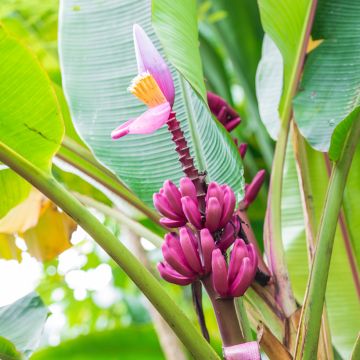
Available in 1 sizes
Available in 1 sizes
Available in 1 sizes
Available in 2 sizes
Available in 2 sizes
Available in 1 sizes
Some ideas for pairing Ensete bananas
The genus Ensete, native to Africa, produces only small bananas. The banana plants of this genus are more commonly used as ornamental plants, particularly due to their very attractive leaves, which range in colour from green to red.
Ensete ventricosum ‘Maurelii’, also known as the Abyssinian red banana, is a variety often found in Mediterranean gardens that enjoy a mild climate in winter. It is indeed capable of withstanding frosts of around -4 to -6°C. It is particularly valued for its long and wide leaves of a beautiful dark green strongly tinged with red.
A foliage that pairs wonderfully with Paulownia tomentosa, the beds of Dahlias, the large grasses Miscanthus and the castor oil plant.
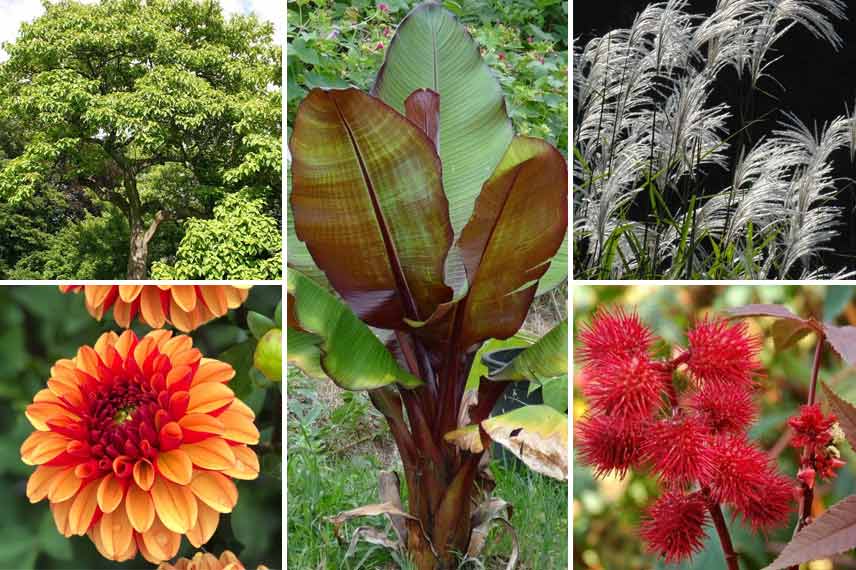
Paulownia tomentosa, Dahlia Balle American Sunset, Ensete ventricosum ‘Maurelii’, Miscanthus sacchariflorus, Ricinus communis
Read also
Diseases and pests of banana plantsSome ideas for pairing Musella banana plants
The genus Musella comprises a single species, Musella lasiocarpa. Native to China and Vietnam, this hardy perennial shrub belongs to the Musaceae family. While it is quite close to the banana plant, it is distinguished by its very bushy habit, limited growth, and striking golden-yellow inflorescence. Also known as the Chinese dwarf banana and golden lotus, Musella lasiocarpa is hardy down to -15°C, making it a perfect “banana plant” for our European gardens.
It is particularly well paired with Tradescantias, Leucadendrons, Phormiums, the Yew and Dahlias.
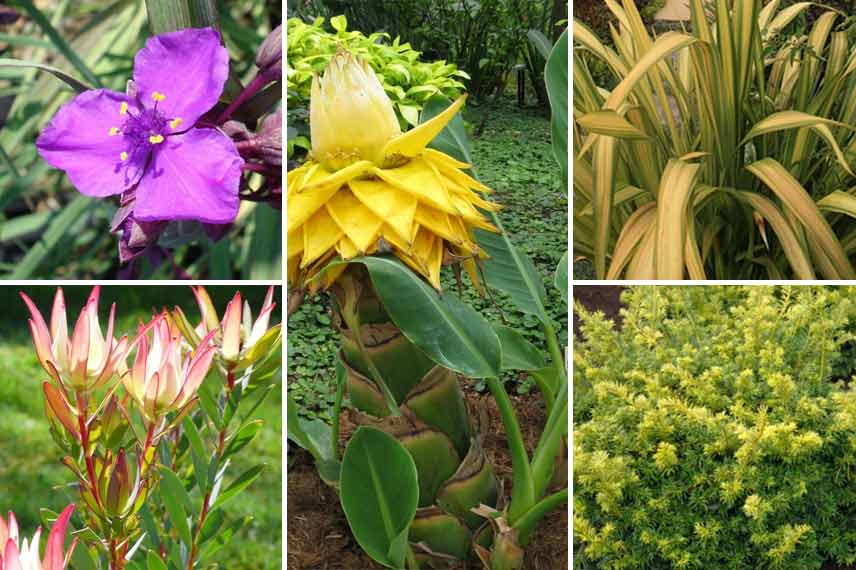
Tradescantia andersonina Concord Grape, Leucadendron Jack Harre, Musella lasiocarpa, Phormium tenax Yellow Wave, Taxus baccata Summergold
- Subscribe!
- Contents
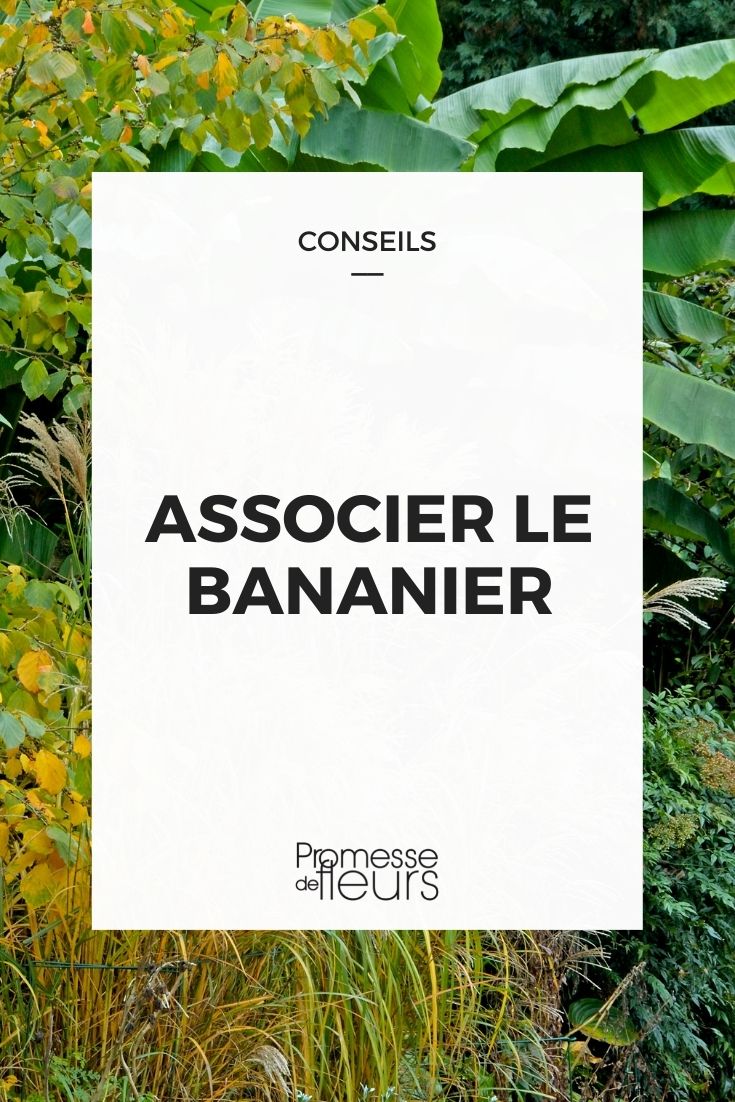
































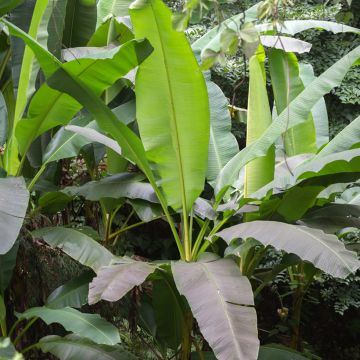
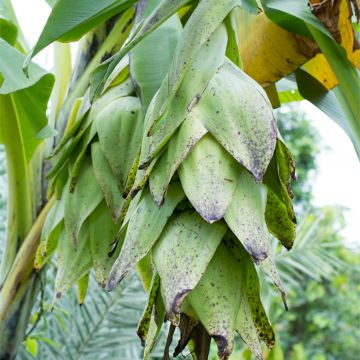
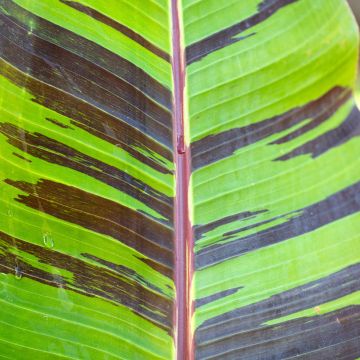
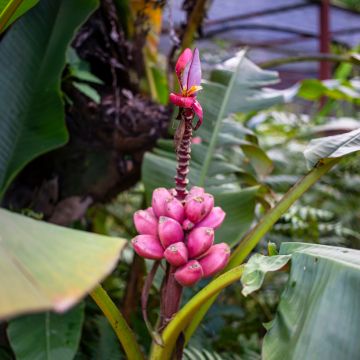




Comments